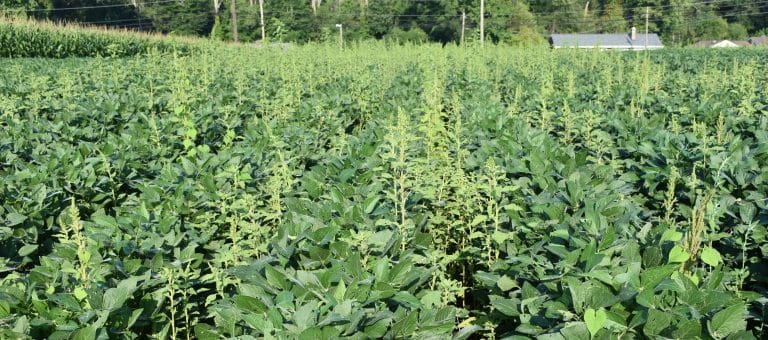Redroot Pigweed

Family: Amaranthaceae
Lifecycle: Annual
Description: An erect summer annual that may reach 6 1/2 feet in height. Redroot pigweed is an abundant seed producer that may be found throughout the United States in horticultural, nursery, and agronomic crops, landscapes, roadsides, and also in pastures and forages.
 Seedlings: Hairy, often red in color, especially near the base. Cotyledons are narrow and green to reddish in color on the upper surface. Lower surfaces of cotyledons have a reddish tint. First true leaves are alternate, ovate in shape, and are slightly notched at the tip of the leaf blade (apex). Hairs may occur on the leaf margins and along veins, especially along the lower leaf surfaces.
Seedlings: Hairy, often red in color, especially near the base. Cotyledons are narrow and green to reddish in color on the upper surface. Lower surfaces of cotyledons have a reddish tint. First true leaves are alternate, ovate in shape, and are slightly notched at the tip of the leaf blade (apex). Hairs may occur on the leaf margins and along veins, especially along the lower leaf surfaces.
Roots: A shallow taproot that is often, but not always, reddish in color.
 Stem: Stout, erect, branched, and reaching 6 1/2 feet in height. Stems usually have short hairs, especially near the upper portions of the plant.
Stem: Stout, erect, branched, and reaching 6 1/2 feet in height. Stems usually have short hairs, especially near the upper portions of the plant.
 Leaves: Alternate, ovate in outline, with petioles that reach 1/2 inch in length. Leaves have wavy margins and hairs that occur along the veins of the lower leaf surfaces.
Leaves: Alternate, ovate in outline, with petioles that reach 1/2 inch in length. Leaves have wavy margins and hairs that occur along the veins of the lower leaf surfaces.

Flowers: Small, green, inconspicuous flowers are produced in dense, compact, terminal panicles that are approximately 3/4 inch wide and from 2 to 8 inches in length. Smaller inflorescences also occur between the stem and the leaf petioles (leaf axils). Male and female flowers occur on the same plant (monoecious). Each terminal panicle contains many densely packed branched spikes that have bracts that are 4 to 8 mm long and 2-3 times longer than the sepals.
Special identifying characteristics: Dense, compact terminal panicles and relatively tall plants with alternately arranged leaves. Redroot pigweed is often confused with other similar pigweed species. For example, Smooth Pigweed (Amaranthus hybridus) is very similar, however this species has terminal panicles that appear less dense, compact, and bristly than those of redroot pigweed. Additionally, the bracts of smooth pigweed are only slightly longer than the sepals, unlike those of Redroot Pigweed (Amaranthus retroflexus). Palmer Amaranth (Amaranthus palmeri) also resembles redroot and smooth pigweed, however the terminal panicles of this species are much longer and narrower than the other pigweed species. These species may also resemble Common Lambsquarters (Chenopodium album) in the cotyledon stage, however common lambsquarters cotyledons often have a mealy gray cast, and the first true leaves are alternate, unlike any of the pigweed species.
 Click here to watch pigweed ID video
Click here to watch pigweed ID video
